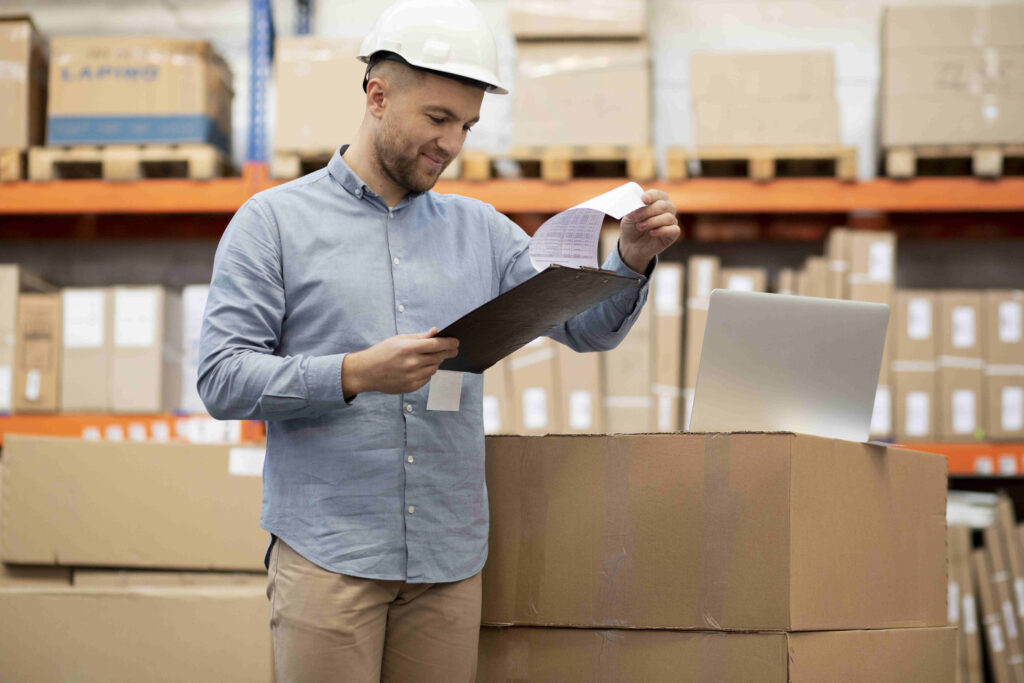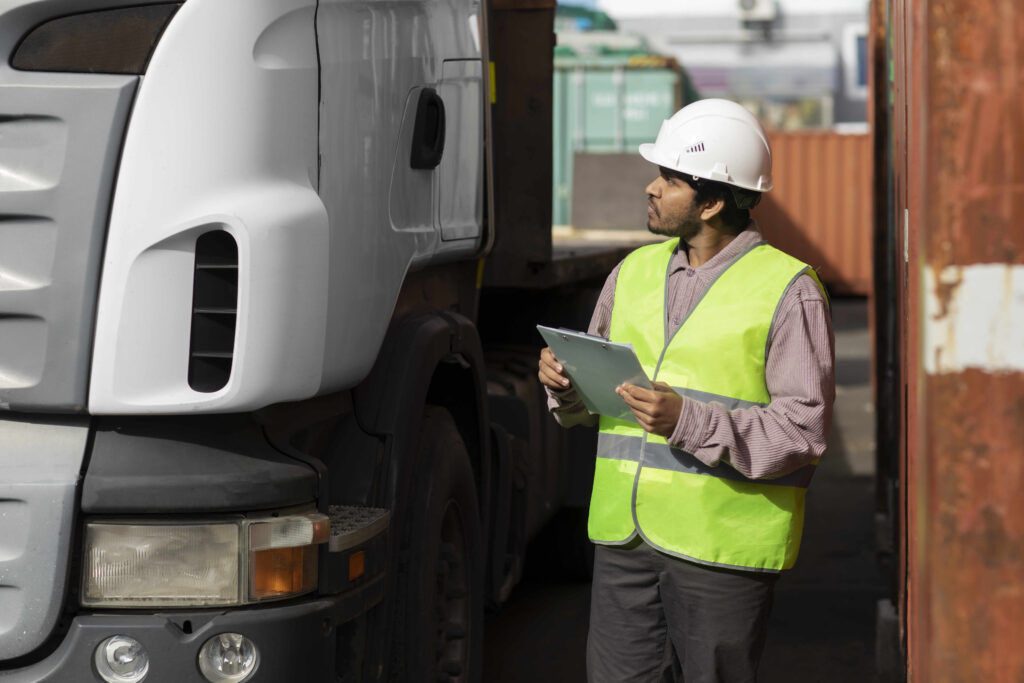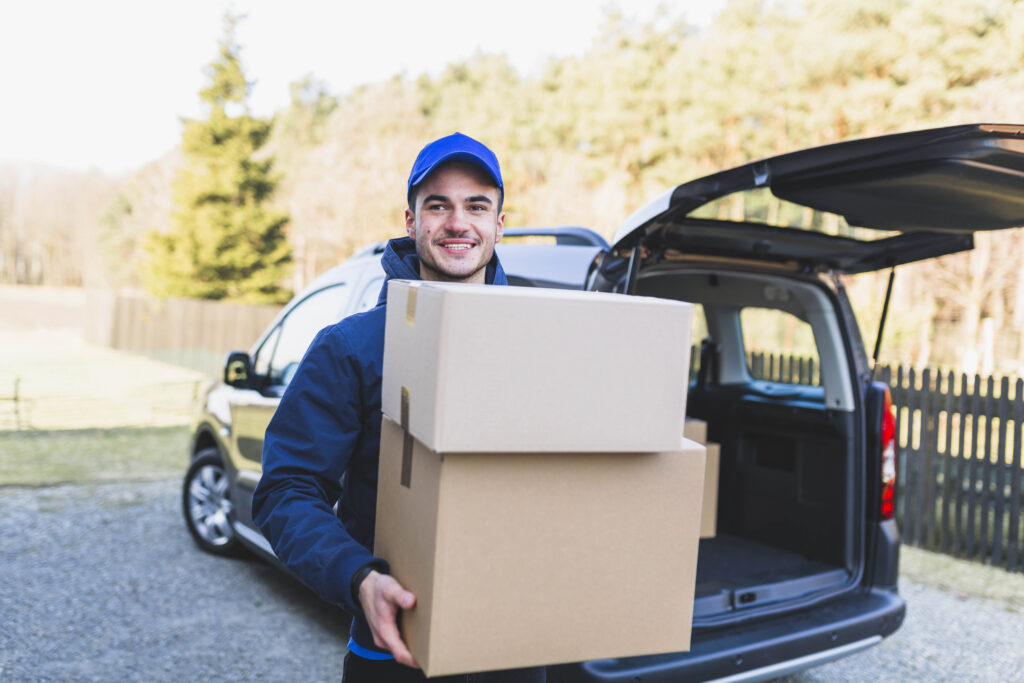Click-to-Doorstep Simplified: Solving Last Mile Delivery Challenges in Retail
Click-to-Doorstep Simplified: Solving Last Mile Delivery Challenges in Retail
Overview:
The last mile of delivery is the most complex and cost-intensive segment of the supply chain, often riddled with inefficiencies. From rural delivery bottlenecks to urban traffic congestion, retailers face numerous obstacles in meeting customer expectations for speed and reliability. This blog delves into the intricacies of last-mile delivery, examines challenges, and explores emerging solutions like crowdsourcing and delivery platforms. For retailers aiming to stay ahead, understanding and mastering last-mile strategies is essential for success.
Table of Contents:
- Introduction: The Importance of Last-Mile Delivery in Retail
- What Is Last-Mile Delivery?
- The Benefits of a Robust Last-Mile Delivery Strategy
- The Last-Mile Problem: Costs and Inefficiencies
- Innovative Players and Models in Last-Mile Delivery
- Innovative Tools for Last-Mile Delivery Optimization
- SaaS Solutions for Last-Mile Efficiency
- Future Trends Shaping Last-Mile Delivery
- Embrace Last-Mile Efficiency with Shipox
- Conclusion
-
Introduction: The Importance of Last-Mile Delivery in Retail
The last mile of delivery is the most critical yet challenging stage in the retail supply chain. It’s where customer expectations meet logistical realities. A recent survey by AlixPartners reveals that 25% of shoppers will choose another retailer if their order doesn’t arrive within three and a half days. This intense pressure to deliver faster is reshaping the industry, pushing businesses to adopt innovative solutions.
From same-day shipping to crowdsourced deliveries, the final-mile landscape is evolving rapidly. But how can retailers overcome inefficiencies while keeping costs manageable? This blog explores what makes last-mile delivery essential, the common challenges, and how innovative approaches are redefining the way goods move from warehouses to doorsteps easy by solutions like Shipox.
-
What Is Last-Mile Delivery?
Last-mile delivery refers to the final step in a product's journey from the distribution center to the customer's doorstep. This critical phase often accounts for a significant portion of shipping expenses and can heavily influence customer satisfaction. While it may seem like a simple process, last-mile delivery is one of the most complex and costly components of the supply chain, requiring innovative solutions to meet growing consumer expectations.
Characteristics of Last-Mile Delivery
- Customer Focus:
Last-mile delivery centers on ensuring packages reach customers promptly and in perfect condition. It emphasizes customer-centric logistics, such as flexible delivery options, scheduled deliveries, and real-time tracking, making the experience seamless for the end user. - Cost Intensity:
The final mile is notoriously expensive, often contributing to over 50% of the total shipping costs. Factors such as fuel prices, labor expenses, and the complexity of managing deliveries over short distances in densely populated urban areas or remote rural regions drive these costs up. - Urban and Rural Challenges:
Urban areas face challenges like heavy traffic, limited parking, and strict delivery windows, while rural areas grapple with sparse delivery points, longer routes, and fewer logistical resources. Each environment demands tailored strategies to optimize efficiency and reduce costs.
Why Last-Mile Delivery Matters
Despite the challenges, last-mile delivery is pivotal in the overall customer experience. Today’s consumers expect not just fast deliveries but also transparency, flexibility, and reliability. For instance, real-time updates on package status, the ability to reschedule deliveries, or options for contactless drop-offs can significantly enhance customer satisfaction.
Retailers that excel in last-mile delivery often gain a competitive advantage, as their ability to meet and exceed delivery expectations fosters customer loyalty. On the other hand, delays or poor communication during this stage can damage a retailer's reputation and lead to lost revenue.
-
The Benefits of a Robust Last-Mile Delivery Strategy
A well-executed last-mile delivery strategy has become a cornerstone of success for retailers, helping them address growing consumer expectations while staying competitive. By focusing on speed, operational efficiency, and customer satisfaction, businesses can unlock a wide range of benefits that directly impact their bottom line.
- Delighting Customers with Speed and Convenience
Modern consumers prioritize speed and convenience in their shopping experiences. Retailers can meet these demands by implementing strategic last-mile solutions, such as utilizing local distribution centers and optimizing delivery routes. These tactics not only reduce delivery times but also provide flexible scheduling options, such as same-day or next-day delivery.
Moreover, real-time delivery tracking allows customers to stay informed about their orders, fostering trust and satisfaction.
- Boosting Sales and Revenue Through Delivery Excellence
A robust last-mile delivery strategy can significantly contribute to increased sales and revenue. Customers are more likely to make repeat purchases when they experience reliable, fast, and accurate deliveries. Seamless last-mile delivery builds trust, encourages repeat business, and drives customer loyalty.
- Operational Efficiency: Reducing Costs and Maximizing Resources
Operational efficiency is a critical benefit of a well-designed last-mile delivery strategy. By automating key processes, businesses can minimize human errors, reduce administrative overhead, and optimize resource allocation. Advanced technologies like delivery management software and route optimization tools enable retailers to handle more deliveries in less time, improving overall productivity.
For example, automating route planning ensures that drivers take the most efficient paths, saving on fuel costs and reducing delivery times. Similarly, real-time tracking and predictive analytics help prevent delays by alerting logistics teams to potential disruptions, such as traffic congestion or weather conditions.
- Gaining a Competitive Edge in a Saturated Market
The retail landscape is crowded, and businesses need every advantage to stand out. A robust last mile delivery strategy provides a significant competitive edge by enhancing customer experiences and operational performance. Retailers that can consistently meet or exceed delivery expectations differentiate themselves from competitors, building stronger brand loyalty in the process.
For instance, offering features like flexible delivery windows, real-time notifications, and easy return options can create a seamless shopping experience that customers appreciate. These value-added services not only attract new customers but also retain existing ones in a marketplace where switching brands is easy.
- Enhancing Brand Reputation and Customer Trust
Beyond speed and efficiency, a well-executed last-mile delivery strategy contributes to a retailer’s brand reputation. Transparent and accurate communication during the delivery process reassures customers and builds trust. When customers receive timely updates and experience minimal issues, they are more likely to leave positive reviews and recommend the brand to others.
-
The Last-Mile Problem: Costs and Inefficiencies
The “last-mile problem” refers to the logistical and financial hurdles that plague this critical stage of the supply chain. Here’s a breakdown of the main issues:
- High Costs:
- Last-mile delivery is often more expensive than earlier stages due to factors like multiple delivery stops, low package density, and driver wages.
- Retailers like Amazon have mitigated costs by introducing minimum order thresholds or small delivery fees, but this isn’t always feasible for smaller businesses.
- Urban Traffic and Rural Distances:
- In urban areas, congestion leads to delays and inefficient routes.
- In rural areas, sparse delivery points make it hard to achieve cost-effective logistics.
- Customer Expectations:
- The rise of “free shipping” has conditioned customers to expect fast, complimentary deliveries, putting additional pressure on retailers to absorb costs.
To address these inefficiencies, innovative solutions like crowdsourced delivery and real-time tracking are gaining traction.
-
Innovative Players and Models in Last-Mile Delivery
Several players dominate the last-mile delivery space, each offering unique approaches:
- Retailers:
Major retailers like Amazon and Target have invested heavily in building their own delivery networks. Amazon Logistics, for instance, delivers parcels faster than most traditional carriers, achieving sitewide delivery speeds of less than two days. - Delivery Intermediaries:
Companies like Instacart bridge the gap between retailers and consumers, enabling same-day deliveries while charging commissions. Instacart alone accounts for nearly 70% of grocery delivery intermediary sales in 2024. - Quick Commerce Startups:
Focused on ultra-fast deliveries, these startups cater to consumers seeking smaller items within minutes. Although growth has slowed post-pandemic, quick commerce is integrating into broader delivery networks for sustainability.
The last-mile delivery segment has long been a pain point for logistics operations due to its complex nature and high costs. Crowdsourcing has emerged as a groundbreaking solution to tackle these inefficiencies head-on. Borrowing principles from ride-sharing platforms, crowdsourced delivery taps into local couriers who use their personal vehicles to deliver packages. This innovative approach has proven to be a game-changer, enabling businesses to enhance efficiency, reduce costs, and improve customer satisfaction.
-
Innovative Tools for Last-Mile Delivery Optimization
Technology is revolutionizing the way retailers manage last-mile logistics. Here are some innovative tools reshaping the landscape:
- Dynamic Route Optimization:
Real-time algorithms identify the fastest, most cost-efficient routes, reducing delays and fuel costs. - Real-Time Tracking Systems:
IoT-enabled tracking devices provide visibility into shipment status, ensuring transparency for both retailers and customers. - Automated Dispatch Systems:
Platforms like delivery management software automate task allocation, ensuring drivers are deployed efficiently. - Customer-Centric Platforms:
Features like scheduled delivery windows and live updates enhance the customer experience, fostering loyalty and trust.
-
SaaS Solutions for Last-Mile Efficiency
Technology plays a crucial role in overcoming last-mile challenges. SaaS (Software-as-a-Service) platforms like Shipox provide scalable, real-time solutions for managing deliveries, tracking orders, and optimizing routes.
How Shipox Enhances Last-Mile Delivery:
- Dynamic Route Optimization: Reduces delays by identifying the fastest delivery paths.
- Real-Time Tracking: Ensures visibility for both retailers and customers.
- Seamless Integration: Syncs with inventory and order management systems for streamlined operations.
Shipox empowers retailers to meet customer expectations while keeping costs under control. Learn more about Shipox solutions.
-
Future Trends Shaping Last-Mile Delivery
As last-mile logistics continue to evolve, several trends are set to shape its future:
- Sustainability Initiatives:
- Retailers are adopting eco-friendly practices like electric vehicles and carbon-neutral shipping options.
- Hyper-Local Fulfillment:
- Micro-fulfillment centres near urban hubs reduce delivery times and improve efficiency.
- AI and Machine Learning:
- Advanced algorithms predict demand and optimize delivery schedules.
- Flexible Delivery Models:
- Features like locker pickups and scheduled deliveries cater to diverse customer needs.
By embracing these trends, retailers can stay ahead in the competitive last-mile landscape.
-
Embrace Last-Mile Efficiency with Shipox
Mastering last-mile delivery is no longer optional—it’s a necessity for staying competitive. Platforms like Shipox empower retailers to overcome challenges through advanced technology and innovative solutions.
Ready to transform your logistics? Request a demo of Shipox today and take the first step toward last-mile excellence.
By implementing strategies like crowdsourcing, SaaS tools, and sustainability practices, your business can deliver not just packages but unparalleled customer experiences in 2025 and beyond.
-
Conclusion: Simplifying Last-Mile Delivery
Last-mile delivery is a critical component of retail success, directly impacting customer satisfaction and operational efficiency. By addressing challenges such as high costs and delivery delays with innovative strategies and technologies, retailers can streamline their processes and meet modern consumer demands. Mastering the last mile isn't just about solving logistical hurdles; it’s about creating a seamless, reliable experience that builds trust and drives growth.
Recent Blogs
[Sassy_Social_Share type=”floating” align=”right” top=”250″]



